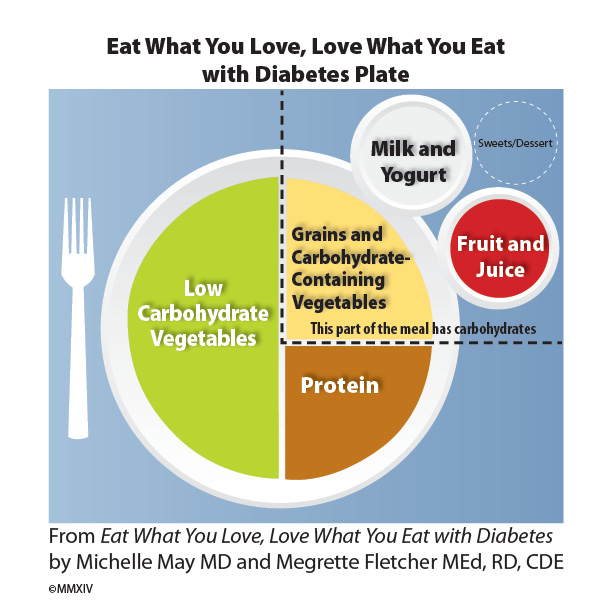The purpose of meal planning is to help lower your blood sugar after meals. To determine if your dietary changes are successful, consider conducting an experiment. The purpose of this experiment is to help you figure out how different types and amounts of food affect your blood sugar. For this experiment, you’ll need the following: food, your blood glucose monitor, and your blood glucose log.

Experiment 1: What happens when you eat different amounts of carbohydrate?
- Eat carbohydrate containing foods, such as carbohydrate containing vegetables, grains or grain products, fruit, dairy, or some combination of these food groups. (See page 105 of Eat What You Love, Love What You Eat with Diabetes.)
- If you feel comfortable counting carbohydrates, aim for 45 or 60 grams if you’re a woman, or 60 or 75 grams if you’re a man.
- Write down your food choices so you’ll remember.
- Next, write down your hunger and fullness level before you eat.
- Then check your blood sugar before the meal.
- Now enjoy your meal. Don’t feel compelled to eat everything on your plate if you are not hungry.
- Within thirty minutes after eating, jot down your fullness level.
- Finally, recheck your blood sugar two hours after eating.
If you are physically comfortable after eating (not still hungry and not too full) and your blood sugar is in your target range—less than 180 mg/dL two hours after eating—then you’ll know that your body responds well to that amount of carbohydrate.
If your blood sugar is above target-over 180 mg/dL two hours after eating-conduct additional experiments. You can play around with noticing your changing sense of fullness while eating. For example, if you feel you need more volume but not more carbohydrate, you could add additional low carbohydrates foods, such as broth based soup, an extra serving of low carbohydrate vegetables, lean protein, or healthy fats.
If your blood glucose was above target, notice what happens when you decrease the amount of carbohydrate you eat during your meal or snack. This can be done in a number of ways. You can reduce your portion sizes. For example, you might have a 1/2 cup of mashed potatoes instead of 1 cup. You could change the type of food you eat; for example, you could try a bread or pasta with more fiber (look for products with greater than 3 grams per serving). You could also decrease the number of carbohydrate-containing foods you eat. For example, instead of having cereal, milk. and fruit for breakfast, you could have cereal and milk and save your piece of fruit for a snack later.
Don’t Miss the Lesson
In Eat What You Love, Love What You Eat with Diabetes, we explain that we are always learning. Remaining curious is the key! If you need help, check out the suggestions in Chapter 17 and have fun learning about YOU!
